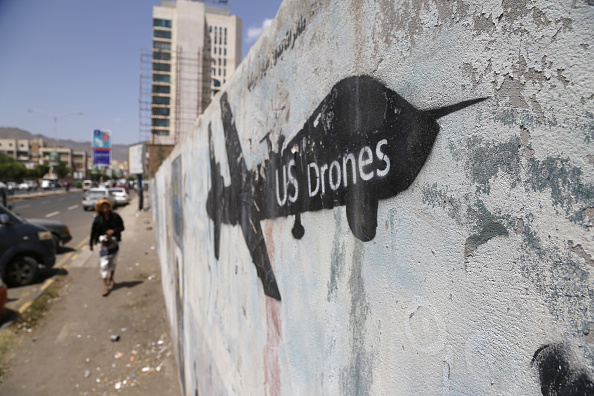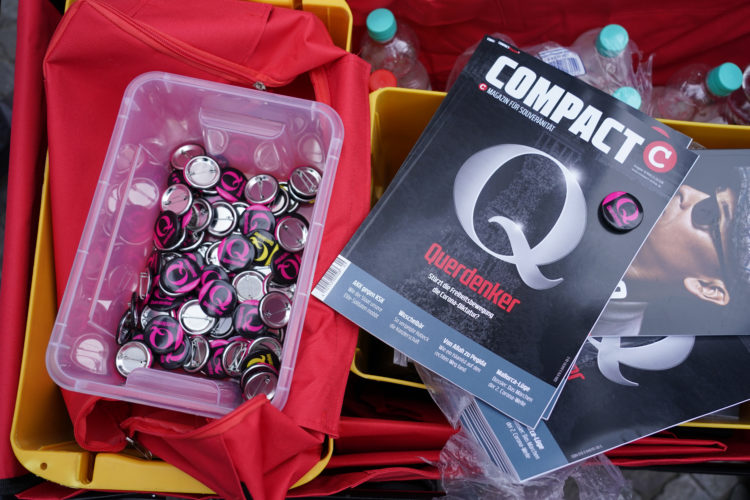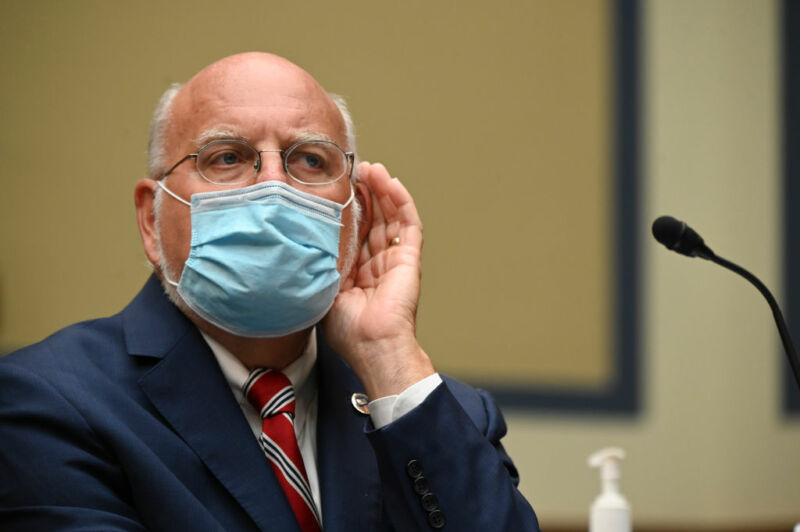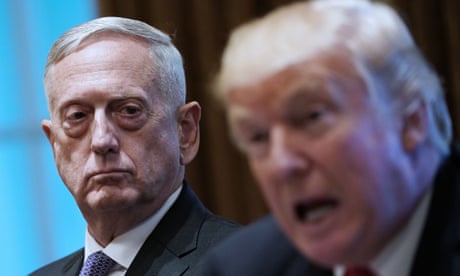by Diane Bernabei and Beth Van Schaack
August 26, 2020

The U.S. State Department’s Office of Inspector General (OIG) recently released a report that, even in its redacted form, makes plain that the Trump administration circumvented U.S. law in multiple ways to carry out arms transfers to the Saudi-led Coalition in Yemen. In doing so, the administration failed to fully and accurately assess the humanitarian impact of U.S. support, according to the report. That is a stunning revelation given the repeated, severe cases of civilian casualties resulting from Saudi-led Coalition operations over the past several years. Although an unredacted version of the report was leaked, a key annex remains classified so the full extent of how this administration’s actions transpired remains hidden from the public. However, what is clear is that Secretary of State Mike Pompeo undertook several steps to evade arms export controls to put lethal munitions into the hands of Coalition members, which human rights groups have alleged have committed war crimes against civilians. (See earlier coverage here). This article discusses the OIG’s findings with reference to what is at stake for the people of Yemen and the worrisome deterioration of U.S. arms control policy under the Trump administration.
The Costly War in Yemen
On August 9, 2018, a school bus carrying children on an excursion in Dhahyan, a city in northern Yemen, was struck by a 500-pound paveway MK-82 laser-precision guided munition, made in the United States by Lockheed Martin and exported to Saudi Arabia for its air force’s use in the war in Yemen. Fifty-one civilians were killed in the strike — 49 of them were children. The incident was just one in a series of attacks on civilians launched by the Saudi-led Coalition, a group that includes Bahrain, Egypt, Jordan, Kuwait, Saudi Arabia, and Sudan (a controversy in itself). (Qatar withdrew in 2017; Morocco withdrew in February of 2019, and the United Arab Emirates (UAE) followed suit in July 2019). This operation, like others, was apparently executed with American-made weapons. In March 2016, the coalition used an MK-84 precision-guided munition (PGM) in an attack on a market that killed 97 civilians, including 25 children. Earlier that year, coalition forces deployed a U.S.-made MK-82 PGM in a strike on a funeral hall in Sana’a. One hundred fifty-five people died and 600 were injured. Since 2015, Physicians for Human Rights has documented 120 attacks on medical infrastructure and health workers, a distinctive feature of this already deadly conflict. A similar report counts 380 attacks on, or in close proximity to, educational facilities. Many of these were airstrikes on areas where researchers insist there were no military targets present. Mwatana for Human Rights, the premier human rights documentation organization in Yemen, co-authored both reports based upon their painstaking research on the ground. An open source intelligence investigation by Bell¿ngcat reveals a stunning collection of allegedly unlawful airstrikes by the Coalition in Yemen.
Since its initial involvement in 2015, the Saudi-led Coalition has repeatedly killed or injured civilians in attacks they claimed either targeted legitimate military objectives or were the result of “mistakes.” Yet, it is hard not to wonder how bombing hospitals, wedding parties, funeral processions, markets, schools, and school buses could possibly serve any legitimate military purpose and how such a seemingly sophisticated coalition could make so many mistakes that take such a consistent and flagrant toll on human life. Indeed, Justice Renate Winter — an Austrian expert on the Committee of the Rights of the Child and former judge of the Special Court for Sierra Leone — pointedly asked the Saudi representative in a session before her Committee:
You say it’s an accident. How many such accidents can you bear and how many such accidents can people in the country bear?
Taken together, these strikes blend into a clear and dominant pattern that has emerged around the Coalition’s behavior in the war in Yemen — the reckless, indiscriminate, or intentional targeting of civilians and an overall disregard for human rights. Individuals, armed groups, and states that deliberately or indiscriminately target civilians, or utilize disproportionate force in their operations, are in violation of International Humanitarian Law (IHL), or the laws of war, and the prohibition on war crimes. Furthermore, the continued use of a knowingly flawed targeting process that cannot distinguish between civilians and military objectives also implicates IHL and the prohibition against war crimes in particular, as has been explained in the past on these pages. To be sure, the Houthi rebels and their supporters are not operating with clean hands either. They too have been credibly accused of war crimes. However, that is no excuse for the Saudi-led coalition, or the United States acting in support, to depart from their legal obligations to respect civilian life.
Restrictions on U.S. Arms Sales to Protect Civilians
Although the United States is not ever listed as a formal member of the Saudi Coalition, its munitions have been instrumental in the Coalition’s operations and the harm to civilians they have caused. Given the magnitude of weapons (ranging from cluster munitions to laser-guided missiles), intelligence, expertise, and logistical support (including, at one point, mid-air refueling) being provided, and even not counting its airstrikes in the country aimed at al-Qaeda in the Arabian Peninsula (AQAP) and ISIS, one can query what threshold of involvement would have to be crossed for the United States to be officially considered a member of this Coalition — or, more precisely, a party to the armed conflict between the Saudi-led Coalition and the Houthis — notwithstanding that Washington is assisting from the sidelines. This question has been taken up here; this article focuses on the way in which the Trump administration has managed to avoid civilian protection elements of U.S. arms control measures in its sale of munitions to Saudi Arabia.
While the U.S. arms export regime is primarily designed to protect against the export of sensitive military technology and arms sales that could pose threats to U.S. national security, its underpinnings are also meant to minimize civilian casualties and prevent U.S. weapons from being exported to states where they could be used in violation of IHL. For this reason, the U.S. Munitions List (USML) grants an oversight power for the trade of defense-related articles, services, and equipment to the State Department’s Bureau of Political-Military Affairs — which must coordinate with State’s Bureau of Democracy, Human Rights and Labor — and the Bureau of International Security and Non-proliferation. This system requires a rigorous assessment of end-users, and their history of war fighting, before permission will be granted for foreign military sales or direct commercial sales of U.S.-made weapons to ensure that arms are not used to commit acts that violate the law.
Since Jimmy Carter occupied the White House, the United States has maintained a Conventional Arms Transfer (CAT) Policy. The Obama-era CAT Policy (Presidential Policy Directive 27) explicitly prohibited the State Department from approving arms transfers in instances in which there was a risk the weapons would contribute to abuses of human rights and violations of IHL. In considering arms transfer decisions, the executive branch took into account:
The likelihood that the recipient would use the arms to commit human rights abuses or serious violations of international humanitarian law, retransfer the arms to those who would commit human rights abuses or serious violations of international humanitarian law, or identify the United States with human rights abuses or serious violations of international humanitarian law.
The Obama administration pledged not to authorize any transfer if it knew that arms would be used to commit: genocide; crimes against humanity; grave breaches of the Geneva Conventions of 1949; serious violations of Common Article 3 of the Geneva Conventions of 1949; attacks directed against civilian objects or civilians who are legally protected from attack or other war crimes as defined in 18 U.S.C. § 2441. Likewise, it would consider whether the transfer of weapons would raise concerns
about undermining international peace and security, serious violations of human rights law, including serious acts of gender-based violence and serious acts of violence against women and children, serious violations of international humanitarian law, terrorism, transnational organized crime, or indiscriminate use.
Congress has a role here as well. Perhaps most importantly, the Arms Export Control Act (AECA), while vesting power in the president to authorize the export of defense articles, also requires a formal advance notification of certain arms sales to Congress. This advance notification (see Sections 36(b), 36(c), and 36(d) of the AECA (22 U.S.C. § 2776)) gives Congress the opportunity to review, deliberate upon, and pass a Joint Resolution of Disapproval in instances in which it would like to block an arms transfer.
President Trump’s Erosion of These Protections
Across the board, the Trump administration has significantly weakened this export regime and these civilian-protection policies, in part to preserve U.S. dominance in the international arms market. The amended Conventional Arms Transfer Policy (National Security Presidential Memorandum 10, issued on April 19, 2018) contains similar references to taking into account the risk that the weapons transferred would be used to commit atrocity crimes. However, it now includes language that narrows the scope of end-user risks to prohibiting only arms transfers in cases in which the United States has actual knowledge its arms exports will be used in attacks “intentionally” directed against civilians. The addition of the word “intentionally” means that arms sales would only be prohibited under a circumstance in which officials have actual knowledge of plans for an intentional civilian massacre, which could exclude instances of U.S. arms being used in indiscriminate or disproportionate attacks when civilians are collateral damage. The use of disproportionate force, even absent an intent to harm civilians, constitutes a war crime under IHL. The International Committee of the Red Cross designates the following as a war crime:
launching an attack in the knowledge that such attack will cause incidental loss of civilian life, injury to civilians or damage to civilian objects which would be clearly excessive in relation to the concrete and direct military advantage anticipated.
Furthermore, the Trump administration recategorized several lethal articles on the USML as “commercial products” that will now be exported under the authority of the Department of Commerce, therefore no longer requiring end-user vetting from the State Department. (Although the Obama administration migrated a few categories, mostly component parts, none of the categories comprised lethal weapons). Such “commercial products” include lethal munitions such as certain semi-automatic firearms, their ammunition and accessories. Besides nullifying the arms exports laws that apply to these categories, this decision comes with other lethal consequences. Among them, experts expect increased illicit arms trafficking and the increased use of U.S. lethal weapons in human rights violations.
And, in April 2019, President Trump withdrew the U.S. signature from the Arms Trade Treaty (ATT). During the Obama administration, the United States was instrumental in negotiating this treaty so that it would be consistent with U.S. export regulations then in place. Secretary of State John Kerry signed the ATT in 2013, and President Obama submitted it to the Senate for ratification. The ATT, whose members and signatories met virtually last week, contains ground-breaking language at Article 6(3) prohibiting any state party from transferring conventional arms if
it has knowledge at the time of authorization that the arms or items would be used in the commission of genocide, crimes against humanity, grave breaches of the Geneva Conventions of 1949, attacks directed against civilian objects or civilians protected as such, or other war crimes as defined by international agreements to which it is a Party.
Although the U.S. never ratified the treaty, its signature indicated its agreement with this approach and its pledge not to violate the object or purpose of the treaty.
These are clear examples of a deterioration in human rights considerations in the arms trade and US arms export policy but over the course of the Trump administration, we have witnessed a disintegration of civilian protections in policies governing U.S. operations as well.
For example, the Trump administration implemented retrograde policies on landmines and cluster munitions. First: the Trump administration reversed an Obama-era prohibition on the use of landmines, which had brought U.S. policy in closer alignment with the Ottawa Convention (the Convention on the Prohibition of the Use, Stockpiling, Production and Transfer of Anti-Personnel Mines and on Their Destruction) and global humanitarian standards. In 2018 alone, civilians represented more than 70 percent of causalities caused by landmines — more than half of those were children. Under the Trump administration, the Defense Department’s policy on landmines now permits the use and production of anti-personnel landmines. In 2017, DoD also reversed a long-standing policy that required the United States to destroy all but a small selection of its active stockpile of cluster munitions. The new policy grants U.S. military commanders the right to approve the use of cluster munitions, DoD the right to acquire new cluster munitions, and U.S. exporters the right to transfer cluster munitions in accordance with existing law, an overarching policy that seems to indefinitely delay the implementation of regulations more in line with the 2008 Convention on Cluster Munitions.
To provide another pertinent example, the Trump White House issued Executive Order 13862, which revokes an important reporting requirement that mandates the Directorate of National Intelligence to release an annual report on strikes undertaken by all U.S. departments and agencies against terrorist targets, a requirement originally contained in Section 3 of Obama’s EO 13732 on Pre -and Post-Strike Measures to Address Civilian Causalities in U.S. Operations involving the Use of Force.
U.S. Track Record in Training Allies in Airstrikes
Notably, EO 13732 features another policy pertinent to the discussion of this article. It directs U.S. agencies and officials to engage with foreign partners on “best practices for reducing the likelihood of and responding to civilian causalities,” particularly in airstrikes. However, past efforts to convey this training, especially with the Saudi-led Coalition, have been fruitless. The Coalition has time and again eschewed the rules and regulations suggested by U.S. officials. This is according to Larry Lewis, former State Department Adviser on Civilian Harm, who, in commenting on the Obama administration’s decision to withdraw training in an interview with the New York Times, said, “the response was, ‘clearly the Saudis aren’t learning.’” Likewise, former senior DOD official Andrew Exum wrote: “decades of U.S. training missions had not produced a Saudi military capable of independently planning and executing an effective air campaign that minimized collateral damage.”
The State Department Inspector General’s Report on U.S. Breaches of These Policies
However watered-down and weakened, this network of laws and policies still expressly prohibits the State Department from approving the sale of arms — like the Mark 80 precision-guided missile (PGM) series — when officials have knowledge that the arms will be used deliberately against civilians. They also clearly grant Congress the right and authority to exercise oversight over, and to block, such transfers. Yet, in its most recent report on the subject, the Office of the Inspector General (OIG) lays bare the fact that the State Department not only neglected its responsibility to consider human rights in approving arms transfers but also intentionally circumvented Congress’s attempt to block the $3.8 billion sale of PGMs to Saudi Arabia and the UAE.
The OIG reported that on May 23, 2019, Pompeo certified “an emergency existed” in the war in Yemen, referring vaguely to “recent Iranian aggression” in the Persian Gulf. Pompeo thus invoked emergency authorities put forth in Section 36 of the AECA to approve and “fast track” 22 arms transfer transactions — $8.1 billion in defense articles, mostly missiles and missile support systems — to Saudi-led Coalition forces. This process waived congressional review requirements for all 22 transfers and yet, these same items had been the subject of congressional holds in the past: in 2018, Congress put a hold on 15 of these transfers. Six of these had been in place for more than a year. In response to the “emergency” certification, which Chairman of the House Foreign Affairs Committee Eliot Engle described as “phony,” Congress — with bipartisan support — passed three bills, again attempting to block the sales, but Trump vetoed all three and the Senate failed to override the presidential vetoes.
The Inspector General specifically avoided assessing whether this was a bona fide declaration of an emergency — an essential question for determining compliance with the law. While this certification maneuver did indeed expedite the transfers, the unredacted version of the report reveals that the schedule of transfers, despite being “fast tracked,” would still take at least a year to implement, bringing into question whether or not an emergency actually existed or, in the very least, raising doubts about whether or not these transfers could in earnest be considered a response to a true emergency. It also revealed a timeline showing that State Department officials first proposed pursuing an emergency certification on April 3, 2019 — a full month before the White House began releasing statements on Iran —but that it took until May 24th to transmit the certification to Congress. While the OIG’s report avoids commenting on the legal questions around State’s decision to declare an emergency certification with respect to events in Yemen — other than noting that it properly adhered to the certification process — it does reach two other clear and damning conclusions:
First, it states that “the Department [of State] did not fully assess risks and implement mitigation measures to reduce civilian causalities and legal concerns associated with the transfer of PGMs.” Pursuant to this conclusion, the report makes a recommendation that is only articulated in the classified version of the review and so cannot be reported upon.
Second, the report concludes that State, “approved below-threshold arms transfers that included components of precision-guided munitions,” a particularly conniving maneuver that dis-assembled the arms transfers put to Congress for review due to their large size, and re-assembled them into smaller packages that would not require congressional approval.
Pompeo refused to sit for an interview with the IG after being briefed about the report’s conclusions, but R. Clarke Cooper, assistant secretary of the Bureau of Political-Military Affairs, did send a letter to the OIG in which he claimed the Department still “takes the risk of civilian casualties extremely seriously” and stated that “the Department, working with the Department of Defense, established and implemented the Advanced Target Development Initiative,” which is meant to help train end-users of U.S.-made PGMs. Sadly, since this administration took office, the rate of civilian causalities caused by the Saudi-led Coalition has nearly doubled.
The OIG report came out four months after Trump fired State Department Inspector General Steve Linick at Pompeo’s request. Linick had not only been investigating these emergency weapons sales but had also been looking into claims that Pompeo had “improperly directed political appointees to run personal errands for him.” Linick’s successor, a Trump insider, has already quit, after only a few months in office. So, it was left to Diana Shaw, acting inspector general, to submit the report, referencing Linick’s removal from office in her very first sentence.
The OIG report reveals that, in addition to formally dismantling the civilian protection export controls, the Trump administration is also attempting to skirt what limitations remain in place by evading congressional review and placing lethal weapons in the hands of the Saudi coalition — all to the detriment of Yemeni civilians. Even in its redacted form, the report underlines a need for significant policy and legislative improvements, but to help experts strengthen laws and close loopholes in the arms export regime, this or the next administration should declassify and release the entire OIG report. In addition to reversing the harmful changes to the USML, CAT, anti-personnel landmines, and cluster munitions policies, lawmakers will also need to implement more robust measures to improve human rights standards in U.S. export laws. As Rachel Stohl and Diana Ohlbaum argue, Congress should “flip the script and require that sales obtain affirmative congressional approval … instead of trying to stop an objectionable sale.”
This pressing need to enhance congressional oversight goes well beyond the obvious humanitarian imperatives, although these are legion. Yemen is a human-made humanitarian tragedy, teetering on the brink of mass famine. Besides these heart-rending considerations, there are legal concerns as well. Given that the United States has knowledge of, and has provided substantial assistance to, its client states’ operations in Yemen, continued provision of lethal munitions and other forms of assistance may actually entail legal liability on the part of the United States, U.S. officials implementing the Yemen policy, and even corporate actors producing the munitions being deployed. If these attacks are indeed war crimes, there are at least three legal grounds, according to Oona Hathaway, under which the United States “would potentially be legally responsible for violations of international humanitarian law committed by the Saudi coalition in Yemen.” First: U.S. actors could be liable under a complicity theory of responsibility. Second: the United States could be liable under principles of State responsibility. Third: the United States could be in breach of Common Article 1 of the Geneva Conventions, which obliges state parties to “ensure respect” for the treaty.
These are matters that a Biden-Harris administration, if not the current administration, would need to urgently take up in order to better align U.S. arms exports with the imperative of atrocities prevention and civilian protection. Dozens of former senior Obama administration officials now agree and have said so publicly in an open letter. Although the support for the Saudis started while he was Vice President, Joe Biden has already signaled during his presidential campaign that he plans to change course, stating bluntly: “It is past time to end U.S. support for the war in Yemen.”






